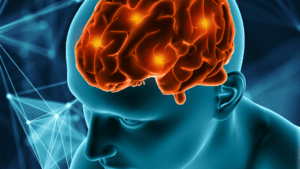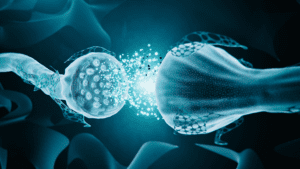In the vast realm of neuroscience, the concept of empathetic-brain-rewiring stands out as a beacon of hope for those striving to enhance their interpersonal relationships. At its core, empathetic-brain-rewiring delves into the intricate processes of neuroplasticity, where our brain’s neural pathways are molded and adapted over time. By understanding and harnessing this dynamic ability, individuals can cultivate a deeper sense of empathy, fundamentally transforming how they connect with others.
Neuroplasticity, often termed the brain’s elasticity, is the remarkable ability of the brain to reorganize and adapt by forming new neural connections. This adaptability plays a pivotal role in empathetic-brain-rewiring. When we intentionally focus on understanding and resonating with others’ emotions, we are essentially training our brains to strengthen the neural pathways associated with empathy. Over time, this intentional practice can lead to profound changes in how we perceive and interact with the world around us.
From a neuroscientific perspective, the journey of empathetic-brain-rewiring is akin to forging new trails in a dense forest. As we consistently tread these paths, they become more defined and accessible, allowing for smoother and more instinctive empathetic interactions. The promise of neuroscience in this realm offers a transformative approach to enhancing our relationships and achieving deeper emotional connections.
Understanding the Science Behind Empathetic-Brain-Rewiring
The concept of empathetic-brain-rewiring is deeply rooted in the principles of neuroplasticity. Neuroplasticity highlights the brain’s unique ability to reorganize itself by forming new neural connections throughout life. This adaptability allows the neurons (nerve cells) in the brain to adjust their activities in response to new situations or changes in their environment.
So, how can one harness the power of neuroplasticity to enhance empathy? Here are 5 Proven Ways to leverage empathetic-brain-rewiring:
- Recognize the Neural Basis of Empathy: Understanding that areas like the anterior insula and the anterior cingulate cortex play pivotal roles in empathetic responses can be the first step in harnessing empathy.
- Engage in Positive Social Interactions: Regularly participating in activities that promote positive social bonds can stimulate the brain’s empathetic pathways, reinforcing the neural connections associated with understanding and compassion.
- Practice Active Listening: Truly listening to someone, without judgment or distraction, can activate neural pathways linked to empathy, allowing for a deeper emotional connection.
- Diversify Your Environment: Immersing oneself in diverse environments and cultures can challenge the brain to understand varied perspectives, further strengthening empathetic responses.
- Identify and Address Empathy Triggers: Recognizing what triggers empathy in your brain, such as emotional resonance, can be pivotal. When we witness someone experiencing an emotion, our brain often mirrors that emotion, leading to a shared feeling. Harnessing these triggers can be a cornerstone of empathetic-brain-rewiring.
By delving deeper into the mechanisms of empathy and understanding how they are intertwined with our neural pathways, we can actively work towards enhancing our empathetic responses. The promise of empathetic-brain-rewiring suggests that with consistent effort and understanding, individuals can foster healthier, more meaningful relationships.
The Neurological Pathways of Empathy

Empathy, often described as the ability to “walk in someone else’s shoes,” is more than just an emotional response; it’s a complex interplay of neural activities. At the heart of empathetic-brain-rewiring lies the understanding of these neurological pathways and their role in shaping our empathetic responses.
The anterior insula and the anterior cingulate cortex are two primary brain regions associated with empathy. The anterior insula is responsible for processing emotions and allows us to resonate with the feelings of others. When you feel a pang of sorrow watching a sad movie or joy at a friend’s success, it’s the anterior insula at work. On the other hand, the anterior cingulate cortex plays a role in detecting errors or conflicts, helping us recognize when someone’s emotions differ from our own.
Another crucial component in the empathetic response is the mirror neuron system. These specialized neurons “mirror” the actions or emotions of others, allowing us to feel a semblance of what they’re experiencing. For instance, when we see someone cry, our mirror neurons might activate, making us feel a hint of their sadness.
However, it’s essential to note that empathy isn’t just about feeling what others feel. It also involves cognitive empathy, where the brain’s prefrontal cortex plays a role. This form of empathy allows us to understand another person’s perspective, even if we don’t necessarily “feel” their emotions.
By harnessing the power of these neural pathways through empathetic-brain-rewiring, individuals can enhance their ability to connect with others on a deeper level. It’s a journey of understanding, feeling, and resonating, all intricately woven together by the marvels of our brains.
Decoding the Lack of Empathy: A Neuroscientific Perspective
While the brain is naturally equipped with mechanisms to foster empathy, certain factors can hinder its optimal functioning. Understanding the reasons behind a diminished empathetic response is crucial for effective empathetic-brain-rewiring.
One of the primary culprits behind a reduced sense of empathy is chronic stress. Prolonged exposure to stress can impact the brain’s amygdala, a region associated with emotions and social behaviors. Over time, an overactive amygdala can lead to emotional exhaustion, making it challenging to resonate with others’ feelings.
Another factor to consider is the role of the brain’s prefrontal cortex in cognitive empathy. This region is responsible for higher-order cognitive functions, including decision-making, perspective-taking, and moral reasoning. Any disruption in its functioning, whether due to trauma, substance abuse, or other neurological conditions, can impair one’s ability to understand others’ perspectives.
Furthermore, the environment plays a pivotal role in shaping our empathetic responses. Individuals who grow up in environments lacking emotional warmth or those exposed to repeated negative social interactions may develop protective mechanisms, leading to reduced empathy. It’s a brain’s way of shielding itself from potential emotional harm.
However, the silver lining is that the brain’s inherent neuroplasticity offers hope. Through targeted empathetic-brain-rewiring strategies, individuals can work towards rebuilding and enhancing their empathetic responses. By understanding the underlying neuroscientific factors and actively addressing them, one can pave the way for deeper, more meaningful connections.
Strategies to Rewire Your Brain with Compassion

Empathy, the ability to understand and share the feelings of another, isn’t just a social nicety; it’s a complex neurological process that can be nurtured and enhanced. Through empathetic-brain-rewiring, we can strengthen our empathetic muscle, so to speak, using strategies grounded in neuroscience. Here’s how:
- Practice Perspective-Taking: Actively try to see situations from others’ viewpoints. This cognitive exercise stimulates the prefrontal cortex, enhancing your ability to understand diverse perspectives, a key component of empathy.
- Engage in Emotional Labeling: When you encounter emotions, either yours or others, try to label them. “She seems anxious,” or “I feel overwhelmed.” This simple act involves the amygdala and the prefrontal cortex, helping regulate emotional responses and foster empathy.
- Cultivate Curiosity about Others: Genuine interest in others’ lives and experiences encourages positive social interactions, stimulating the brain regions associated with empathy. Ask questions and listen actively to engage your empathetic pathways.
- Read Fiction: Surprisingly, reading fiction can enhance empathy. By immersing yourself in a character’s life, you simulate the experience of their emotions and challenges, engaging the brain’s empathy circuits.
- Practice Kindness and Compassion: Engaging in acts of kindness without expecting anything in return activates the brain’s reward system linked to pleasure, social connection, and trust. These positive interactions reinforce empathetic behavior.
- Reflect on Your Own Experiences: Recall a time when you experienced strong emotions and how it felt. This self-reflection can help you connect more deeply with the emotions of others, activating neural networks associated with empathetic feelings.
By integrating these practices into your daily life, you engage in empathetic-brain-rewiring, harnessing your brain’s neuroplasticity to enhance empathy and compassion. It’s not just about understanding emotions; it’s about fostering a deeper connection that resonates at a neurological level.
The Role of Social Neuroscience in Empathy Building
Social neuroscience is an interdisciplinary field that delves into understanding how biological systems implement social processes and behaviors. It offers invaluable insights into the neural underpinnings of social interactions, including empathy. By understanding the role of social neuroscience in empathetic-brain-rewiring, we can further appreciate the intricate dance of neurons that allows us to connect with others.
- Mirror Neurons and Empathy: One of the most fascinating discoveries in social neuroscience is the existence of mirror neurons. These neurons “fire” both when an individual performs an action and when they observe someone else performing that same action. This mirroring mechanism is believed to be the foundation of empathy, allowing us to “feel” what others are feeling.
- The Social Brain Network: Our brains have a dedicated network for processing social information, including the medial prefrontal cortex, the temporoparietal junction, and the posterior superior temporal sulcus. These regions work in tandem to help us understand others’ intentions, beliefs, and desires, forming the bedrock of our empathetic responses.
- Oxytocin and Social Bonding: Often dubbed the “love hormone,” oxytocin plays a pivotal role in social bonding and empathy. Released during positive social interactions, oxytocin enhances trust, reduces fear, and fosters a sense of connection. By understanding its role, we can harness its power in empathetic-brain-rewiring strategies.
- Empathy and the Pain Matrix: When we see someone in pain, our brain’s pain matrix – including the anterior insula and the anterior cingulate cortex – activates. This shared neural response underscores the deep-rooted connection between empathy and our own experiences of pain or discomfort.
- Emotion Regulation and Empathy: The ability to regulate one’s emotions is intrinsically linked to empathy. The prefrontal cortex, responsible for executive functions, helps modulate our emotional responses, ensuring that our empathetic reactions are appropriate and constructive.
In essence, social neuroscience provides a window into the complex neural choreography that underpins our social interactions. By tapping into these insights, we can more effectively engage in empathetic-brain-rewiring, fostering deeper, more meaningful connections with those around us.
Rebuilding Empathy: Steps to Reignite Compassionate Connections

Empathy, often seen as the cornerstone of meaningful human connections, can sometimes wane due to various life experiences or challenges. However, the brain’s inherent adaptability offers a beacon of hope. Through empathetic-brain-rewiring, one can rejuvenate this vital emotional skill, paving the way for healthier relationships and a more fulfilling life.
- Acknowledge and Understand: The first step in rebuilding empathy is acknowledgment. Recognize areas where empathetic responses might be lacking and seek to understand the root causes, be it past traumas, chronic stress, or other neurological factors.
- Engage in Active Listening: One of the most potent tools for fostering empathy is active listening. By fully immersing oneself in another’s narrative without judgment, you pave the way for genuine understanding and connection.
- Seek Diverse Experiences: Engaging with diverse cultures, backgrounds, and experiences can challenge preconceived notions and biases. This broadened perspective can enhance empathetic understanding and responses.
- Practice Empathy Exercises: Simple exercises, like imagining oneself in another’s shoes or reflecting on shared human experiences, can stimulate the brain’s empathetic circuits. Over time, these exercises can become second nature, enhancing empathetic responses.
- Educate Yourself: Dive into the world of social neuroscience and understand the mechanics of empathy. Knowledge about the brain’s workings can offer insights and tools for enhancing empathetic responses.
- Foster a Supportive Environment: Surrounding oneself with empathetic individuals can reinforce positive behaviors. Engage in discussions, share experiences, and seek feedback to refine and enhance your empathetic skills continuously.
- Celebrate Small Wins: Every step towards rebuilding empathy is a victory. Celebrate moments of genuine connection and understanding, reinforcing the positive behaviors and neural pathways associated with empathy.
In the journey of empathetic-brain-rewiring, it’s essential to remember that empathy is not just a trait but a skill that can be nurtured and developed. By actively engaging in the process and leveraging insights from neuroscience, one can transform their relationships, fostering deeper connections and mutual understanding.
#empathetic-brain-rewiring #neuroscienceofempathy #neuroplasticity #brainconnections #socialneuroscience #mirrorneurons #emotionalresonance #activelistening #brainrewiring #oxytocinbonding #neuralpathways #cognitiveempathy #rebuildingempathy #compassiontraining #brainadaptability #empatheticresponses #relationshiptransformation #perspective-taking #emotionalregulation


